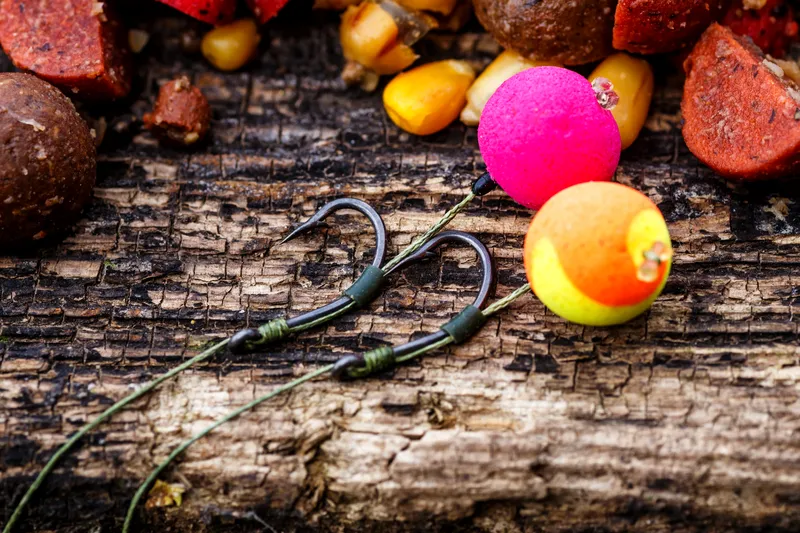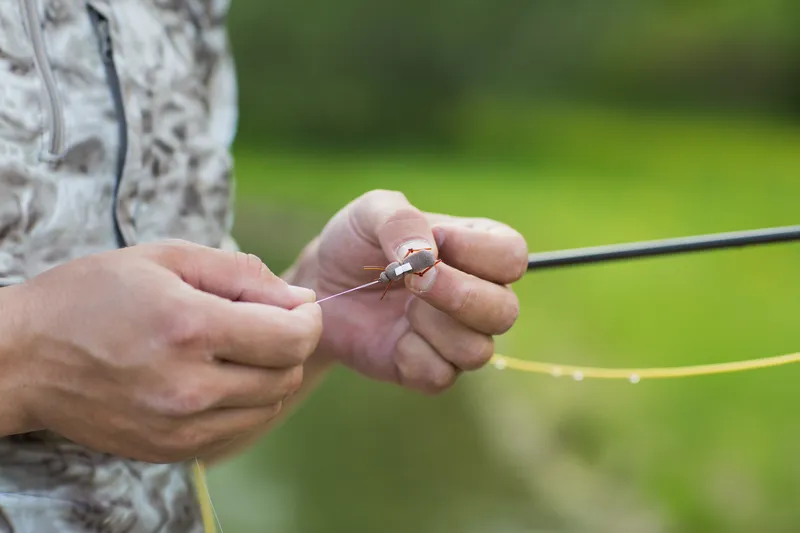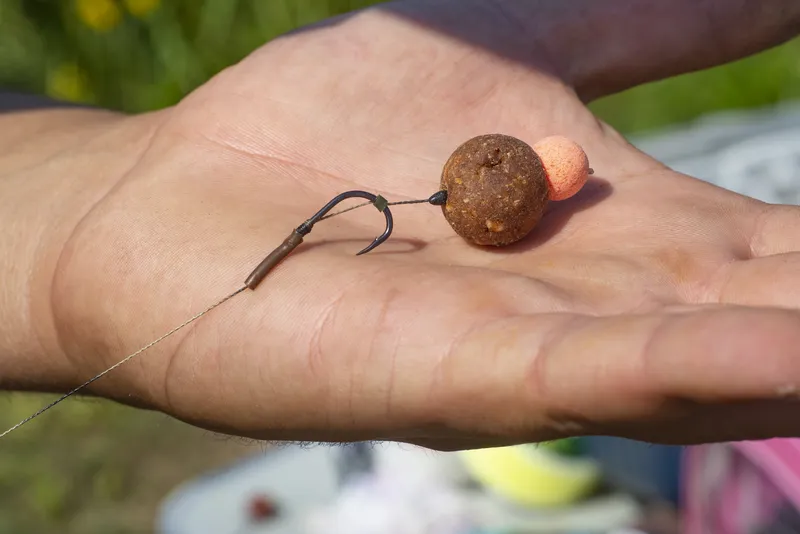Are you tired of going out fishing with no luck? Have you heard of Texas rig fishing but aren’t sure what it is or how to use it? Well, you’re in luck!

Texas rig fishing is a popular technique among bass fishers that can yield amazing results when used correctly. In short, a Texas rig consists of a hook with a weight attached to the line above it.
A soft plastic bait is then threaded onto the hook to finish the rig. But why is this such a popular technique for catching bass?
The Benefits Of Texas Rig Fishing
One reason anglers love using the Texas rig method is its versatility. It can be used in a variety of environments and depths.
Plus, because the weight sits at the end of your line, your bait sinks slowly and naturally through the water column. This makes it an excellent choice for fishing areas with heavy vegetation or cover.
Another benefit is that because the bait is weedless, you can fish in areas where other techniques may get snagged or caught on debris. The weight also helps you cast farther and more accurately than other methods.
Because many types of soft plastic baits can be used with the Texas rig method, you have endless options to experiment with different colors and shapes until you find what works best in your local waters. Overall, there are many reasons why bass anglers enjoy using this technique so much.
Its versatility makes it an excellent choice for beginners just starting out as well as experienced fishermen looking to up their game. In our next section we’ll dive deeper into setting up your own Texas rig for maximum effectiveness!
Setting Up The Texas Rig
Choosing The Right Hook And Weight
When it comes to setting up your Texas rig, two of the most important decisions you’ll make are choosing the right hook and weight. For hooks, you’ll want to go with something strong and sharp that can easily penetrate a bass’s mouth. Many anglers prefer a wide gap hook, as it provides plenty of space to set the hook into a fish’s mouth.
As for weights, you’ll generally want to go with something heavy enough to keep your bait near the bottom, but not so heavy that you can’t feel when a fish bites. A good starting point is usually around 1/8 or 1/4 ounce.
Selecting The Right Soft Plastic Bait
Another key component of your Texas rig setup is selecting the right soft plastic bait to use. There are countless options out there, but some popular choices include senkos, worms, crawfish imitations, and creature baits. When choosing a bait, think about what type of forage is present in the body of water you’re fishing in and try to match it as closely as possible.
No products found.
You should also consider factors like color and size – natural colors like green pumpkin or watermelon tend to work well in most situations. To assemble your rig, start by sliding your weight onto your line followed by your hook – make sure to position it so that it will lie flat against your selected bait.
Then thread on your chosen soft plastic until it reaches just past the bend in the hook – this will help ensure good hooksets when fish take a bite. With these basic setup tips down pat, you’re one step closer towards becoming an expert Texas rig angler!
Casting And Retrieving Techniques
How To Cast Effectively?
Casting a Texas rig can be a bit tricky for new anglers, but with some practice, it becomes second nature. The key is to use your wrist more than your arm when casting. Start with the rod tip low and quickly bring it back to about the 11 o’clock position.
Then, using a flicking motion with your wrist, send the rig out towards your target. It’s also important to keep in mind that you want to make as little noise as possible when casting.
Bass are highly sensitive to sound and vibrations in the water, so a loud cast can easily spook them away from your bait. Try using a braided line or fluorocarbon line which will help you achieve longer casts without making too much noise.
Different Types Of Retrieves To Try
There are several different types of retrieves that can be effective when fishing with a Texas rig. One popular technique is the slow drag retrieve where you let the bait sink to the bottom and then slowly drag it along with short twitches of your rod tip.
This mimics a crawfish or worm moving along the bottom and can entice bass into biting. Another technique is called “hopping” where you lift your rod tip up quickly causing the bait to jump off of the bottom before letting it sink back down before repeating this process over and over again until there’s no more slack in your line.
If you’re fishing in deeper water or during colder months, try using a “dead stick” retrieve which involves letting the bait sit on the bottom without moving it at all for several seconds at a time. This technique imitates an injured or dying prey which can attract bass who are less active during these periods.
Fishing In Different Environments
Tips For Fishing In Shallow Water
Fishing in shallow water can be both exciting and challenging. One key tip is to pay attention to the type of bottom structure you’re fishing over.
Bass often use shallow water areas with cover such as grass, weeds, or timber as feeding grounds, so it’s important to focus on these areas. Another important tactic is to vary your retrieval speed while fishing.
A faster retrieve will allow you to cover more ground quickly while a slower retrieve will give your bait more time in the strike zone. Be sure to experiment with different speeds until you find what works best for the fish you’re targeting.
Additionally, try using smaller soft plastic baits that mimic natural prey found in shallow water environments such as worms or lizards. Keep an eye out for any signs of fish activity such as swirls or splashes which can give away the location of a potential catch.
Strategies For Deep Water Fishing
Fishing in deep water requires different strategies than fishing in shallower areas. One of the most important things to remember when fishing deep is to use a heavy enough weight to get your bait down to where the fish are holding.
A heavier weight will also help you detect bites more easily since there’s less slack line between your rod tip and the bait. When fishing deep water structures like ledges or drop-offs, try using a slow drag-and-pause technique with your bait.
This will allow it to slowly sink and look like an injured prey item that bass find hard to resist. Another effective tactic is using electronics like fishfinders or depth sounders which can help locate schools of fish at different depths.
Once you’ve located fish on your electronics monitor, adjust your presentation accordingly by selecting baits that match their preferred feeding patterns. By following these tips and strategies, you’ll be well on your way to catching more fish in both shallow and deep water environments.
Troubleshooting Common Problems

Dealing With Snags And Tangles
One of the most frustrating aspects of fishing is getting your line snagged or tangled. When using a Texas rig, this can be especially frustrating because you have to re-tie the rig every time it gets stuck.
To avoid getting snagged, it’s important to keep your bait off the bottom as much as possible. This means selecting an appropriate weight for your bait and making sure your line is tight when retrieving.
If you do get snagged, try pulling gently from different angles to see if you can wiggle the rig free. If that doesn’t work, it’s time to break out the pliers and cut the line.
What To Do When Fish Aren’t Biting
Even experienced anglers have days when they just can’t seem to catch anything. When this happens, don’t give up hope!
There are several things you can try to increase your chances of catching fish with a Texas rig. First, consider changing up your bait or presentation technique.
No products found.
Try switching from a worm to a creature bait or adding scent attractant like garlic or shrimp oil to your lure. You may also want to experiment with different colors and sizes until you find what works best in that particular body of water.
Another thing that could be affecting your catch rate is the time of day or weather conditions. Bass tend to bite more in low light conditions or when there is cloud cover, so plan accordingly.
Also, consider trying different depths until you find where the fish are biting – sometimes they’ll be shallow and other times they’ll be deeper down in the water column. Remember that fishing is about more than just catching fish – enjoy being out on the water and appreciate nature’s beauty while you’re working on perfecting your Texas rig technique!
Advanced Tactics For Experienced Anglers

Using Scent Attractants To Increase Your Catch Rate
Experienced anglers know that fishing is not just about using the right gear, but also about understanding the behavior and preferences of the fish they are targeting. One way to boost your chances of catching more bass with a Texas rig is by using scent attractants.
These products are designed to mimic the smells and flavors of natural baitfish, making your soft plastic lure more enticing to hungry bass. There are many different types of scent attractants on the market, from sprays and gels to scented soft plastics.
Experiment with different brands and flavors until you find one that works best for you. Some anglers prefer garlic or crawfish scents, while others swear by shad or minnow flavors.
When applying scent attractant, be sure to coat your entire lure thoroughly and evenly for maximum effectiveness. And don’t be afraid to reapply frequently throughout your fishing session, especially if you’re fishing in murky or heavily fished waters.
How To Finesse Fish With A Texas Rig?
Finesse fishing is a technique that involves using light tackle and subtle movements to entice wary fish into biting. It’s a highly effective approach when targeting finicky or highly pressured fish with a Texas rig. To finesse fish successfully, start by choosing a lighter weight than you would typically use with your Texas rig setup (e.g., 1/16 oz instead of 1/4 oz).
This will allow your bait to sink slower and look more natural in the water. Next, focus on making small twitches or hops with your rod tip instead of large sweeping motions.
It’s also helpful to pause briefly between each twitch so that the bait can settle back down towards the bottom before moving again. This mimics the movement of natural prey and can trigger strikes from even the most wary bass.
Be patient and pay close attention to subtle changes in line tension or movement – this can indicate that a fish has taken your bait so be ready to set the hook quickly. With a bit of finesse, you’ll soon be catching more bass than ever before!
Recap Of Key Tips And Techniques
Throughout this article, we’ve covered a lot of ground when it comes to Texas rig fishing. From setting up your rig to casting and retrieving techniques, you now have a solid foundation to catch more bass.
Here are some key takeaways: Firstly, selecting the right soft plastic bait is crucial for success.
Different types of baits have different rigging styles and can be used in different environments. For example, straight-tailed worms are great for clear water while curly-tailed grubs work better in murkier water.
Secondly, the way you present your bait can make all the difference. Experiment with different retrieves like slow rolling or hopping your bait along the bottom until you find what works best for you.
Don’t forget about troubleshooting common problems like getting snagged or dealing with finicky fish. Be patient and try new strategies until you find what works best. After this article, check out What Is Fishing Line Made Of?
Encouragement To Get Out There And Try Texas Rig Fishing
Now that you have a solid understanding of Texas rig fishing tips and techniques, it’s time to put them into practice! Whether you’re a beginner or an experienced angler looking to try something new, there’s no better time than now to get out there and start fishing. Don’t be discouraged if things don’t go as planned at first – learning any new skill takes time and practice.
Remember that every day on the water is an opportunity to learn something new and improve your technique. Texas rig fishing is one of the most effective ways to catch bass in a variety of environments.
With some basic knowledge and lots of patience, anyone can become hooked on this exciting technique. So grab your gear, hit the water, and start reeling in those big catches!
Frequently Asked Questions
The best bait for the Texas rig is a soft plastic bait such as worms or crawfish imitations, but it can also be used with a variety of other baits like creature baits and flukes.
The technique for the Texas rig is to cast it out and let it sink to the bottom, then use a slow and steady retrieve with occasional pauses to give the bait a more natural action.
The recommended gear ratio for the Texas rig is a low gear ratio such as 6:1 or 7:1, as this allows for more power and control when reeling in the fish.
The best knot for a Texas rig hook is a Palomar knot, as it is strong, easy to tie, and provides good hookset.